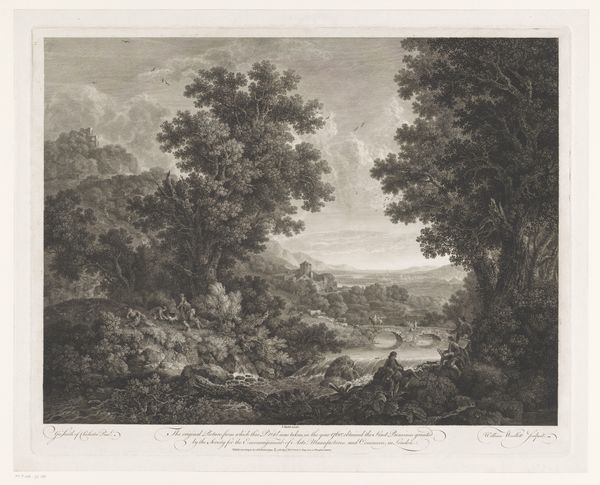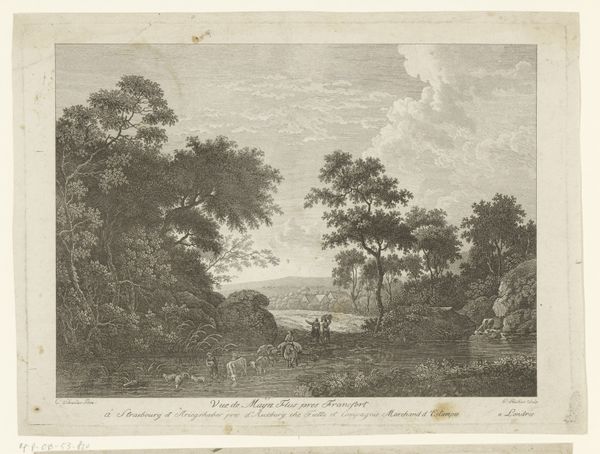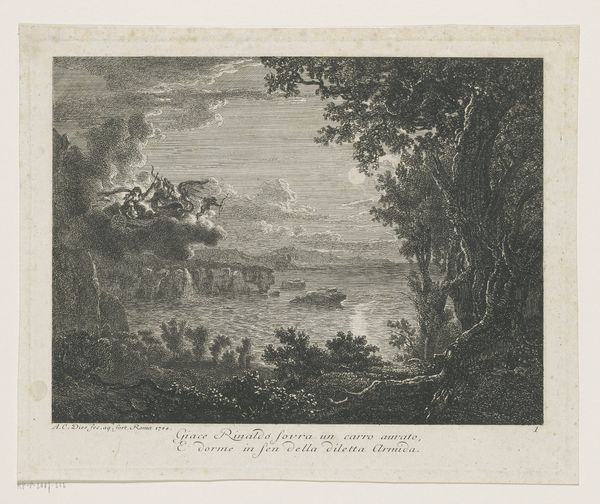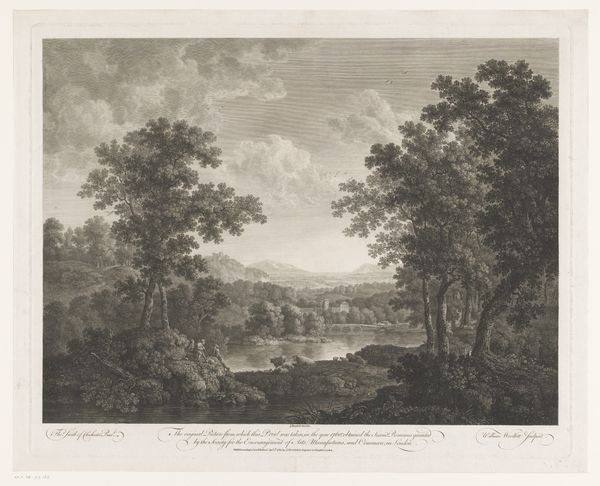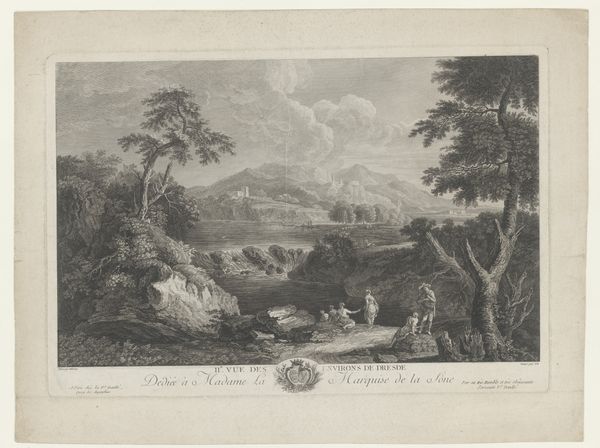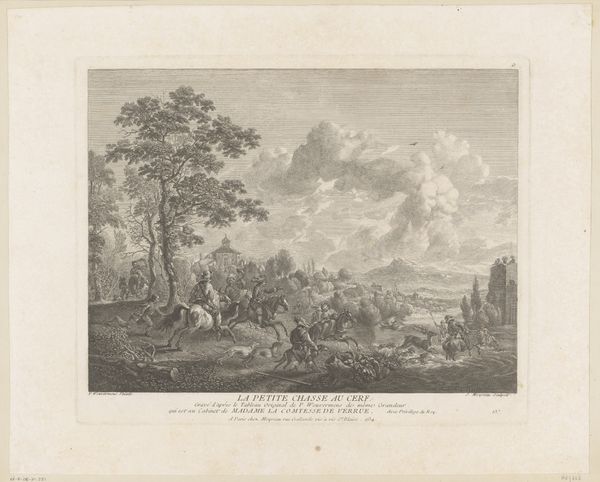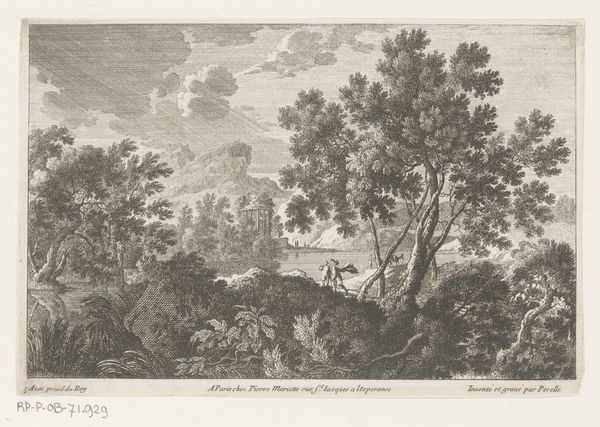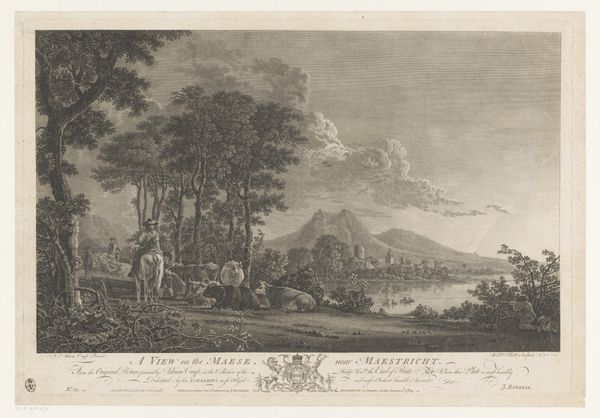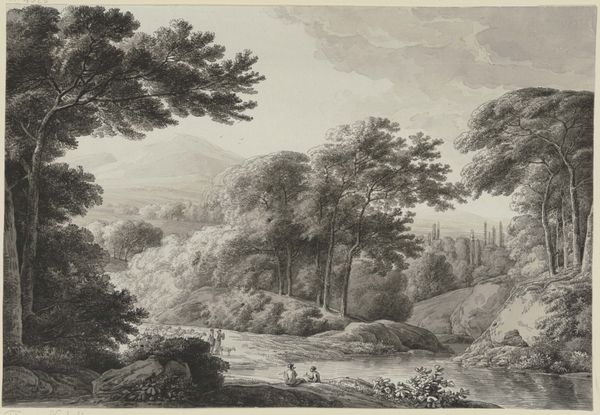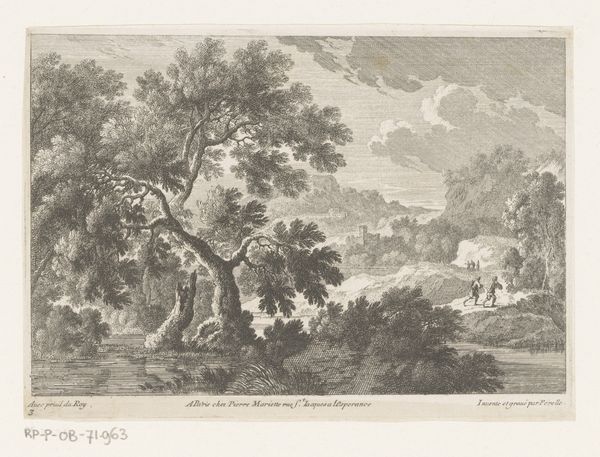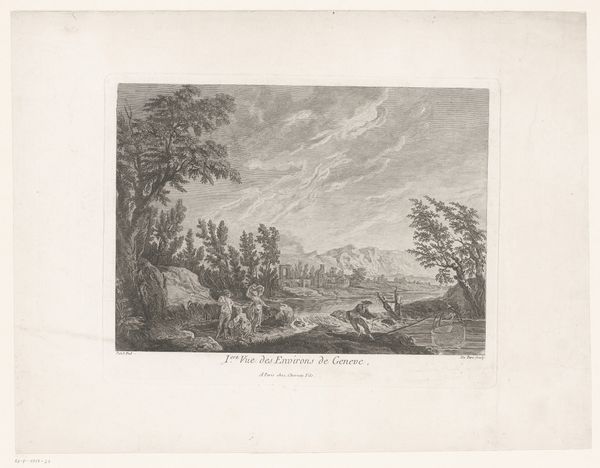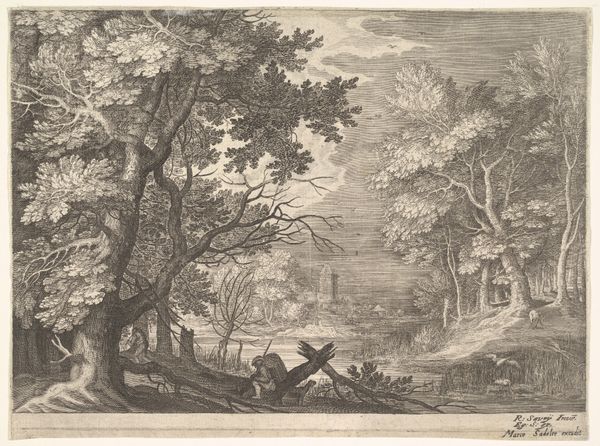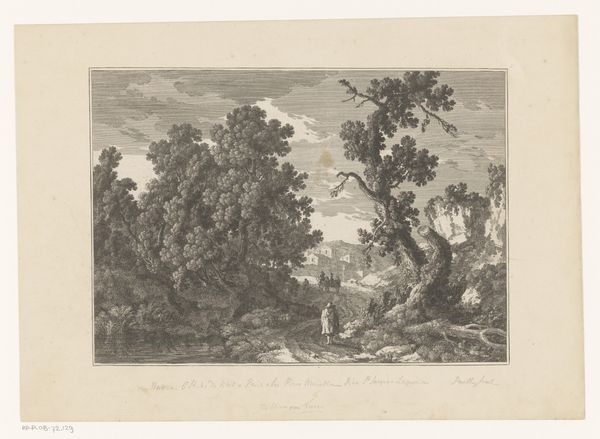
Dimensions: image: 16 9/16 x 19 13/16 in. (42 x 50.3 cm), trimmed to image
Copyright: Public Domain
Curator: We’re looking at "Le Temps Orageux," or "The Stormy Weather," an engraving by Jean-Honoré Fragonard, likely created between 1745 and 1806. It's currently held at the Metropolitan Museum of Art. Editor: Stormy weather, indeed. It feels so heavy and almost ominous, even rendered in monochrome. The way the clouds dominate the top half… are we sure something bad isn’t about to happen to those sheep? Curator: The romanticization of nature and the turn to landscape were powerful shifts in the era's thinking. While this appears a simple pastoral scene, consider its political backdrop—the unease of the late 18th century. The storm could easily symbolize the brewing social unrest, felt even within the privileged sphere that Fragonard typically served. Editor: Absolutely, and I'm particularly struck by how Fragonard used the etching and engraving processes to create texture. You can practically feel the density of the foliage. Notice how he employs varied line weights and hatching to articulate different textures, adding a sense of realism—or, I suppose, romantic realism—to the scene. The labor behind these fine details really indicates the value that such imagery had. Curator: And engravings like these weren't just artistic expressions; they were vital for disseminating visual culture, particularly landscape and genre painting, amongst a broader audience beyond those who could access the original artwork or visit the sites depicted. The circulation of such images also solidified a sense of shared cultural experience, reinforcing existing social hierarchies through idealizations. Editor: That's so right – considering the prints themselves are objects. It’s clear Fragonard put careful intention into every facet of production. Curator: Understanding this print demands that we consider its social and historical contexts; what meanings did its imagery hold for the aristocracy? Editor: But understanding its materiality demands we ask another question: What labor was poured into its construction? That speaks volumes, too.
Comments
No comments
Be the first to comment and join the conversation on the ultimate creative platform.
